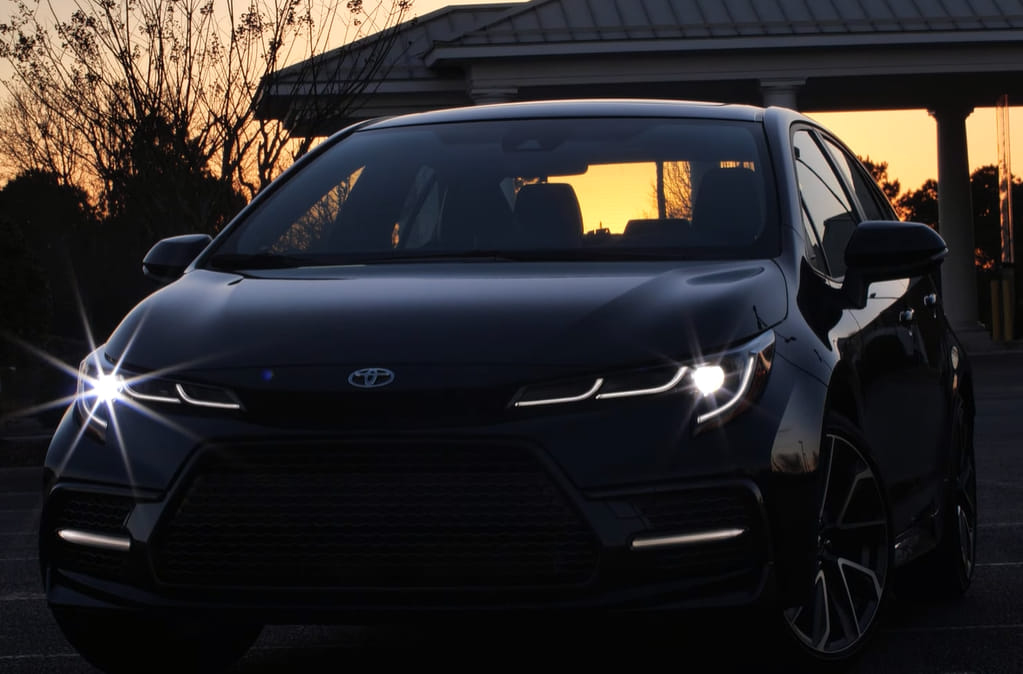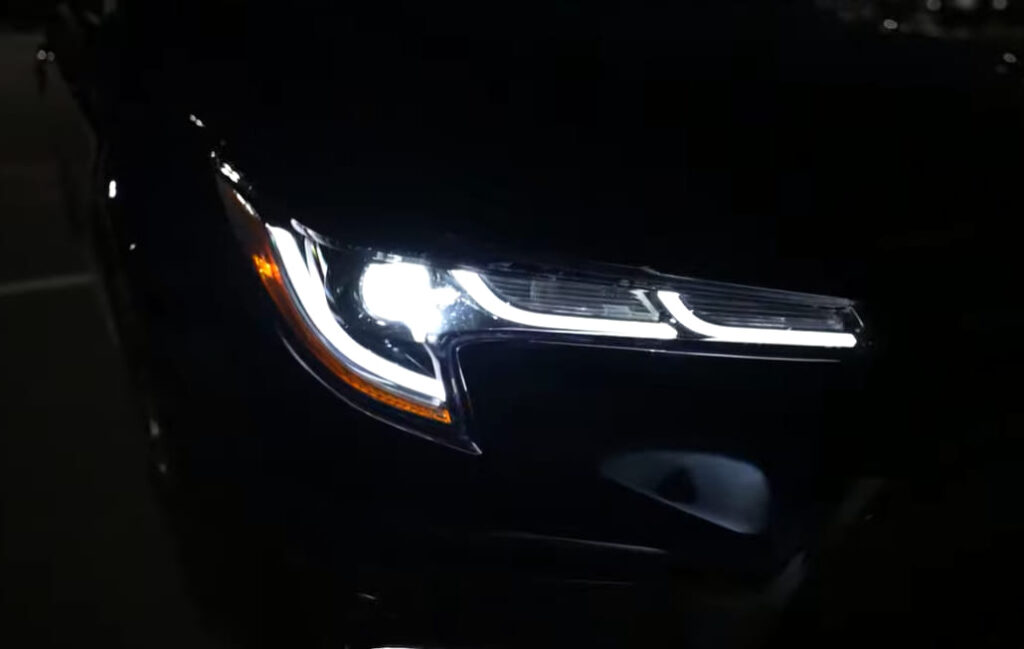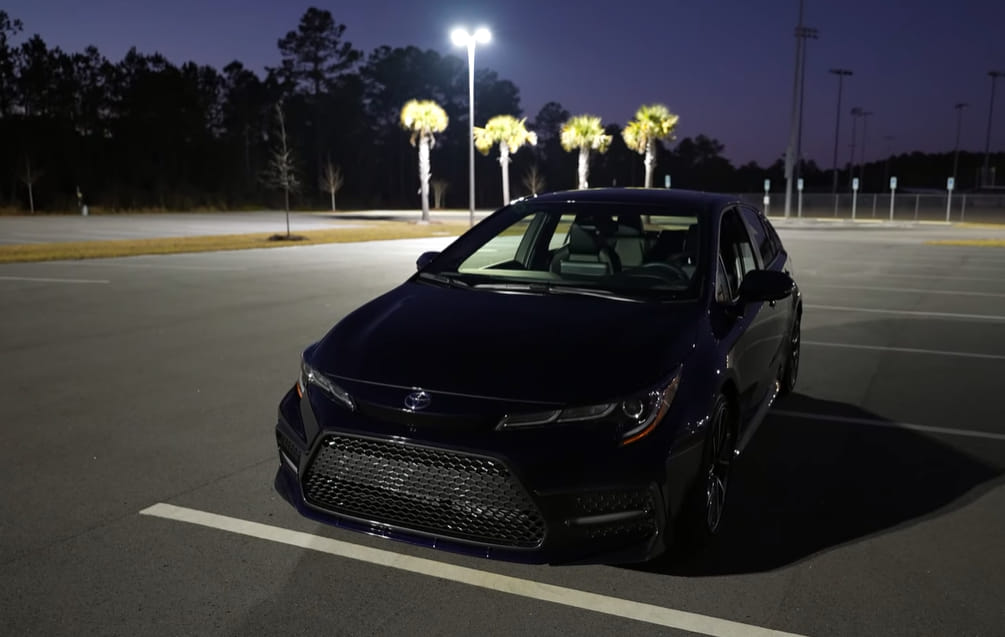With your Toyota Corolla headlights not working, it can get concerning trying to go from point A to point B.
This is particularly true when you are driving in the dark or a dim light situation. The last thing you want is to get into an accident or cause some further problems to your vehicle.
Although headlight technology is not exactly complicated, there are many ways that would trigger problems with your headlights. This is why if you discover that your car’s headlights no longer function as they should, it is important to determine the cause of failure and to go about the right steps to get this fixed.
The process you take for troubleshooting the issue does not need to be complicated. However, this depends on the type of issue you are experiencing with your headlights. So, let’s take a look at the causes of this problem and what can be done about each.

Causes Of Toyota Corolla Headlights Not Working
One of the most common reasons why your headlights may fail would be an electrical issue. It could also be a physical or mechanical problem with the bulbs. So, if you want to perform the right troubleshooting technique, you need to be clear about the cause to carry out the best solution.
Let’s say that only a single headlight fails to work. The most common reason for this is the bulb has burned out. So, naturally, a definitive solution for this is to replace your bulb.
But in the event that this does not solve the problem, then fuse or wiring issues may be present. In the case of HID headlights, there are other related components that may cause the problem. Thus, this needs to be inspected, as well.
If both headlights are not working, it may be that the bulbs burned out or there are issues with the ground or power. You may want to check the ground and power, then carry out the right steps required.
Do keep in mind that bulbs do not typically burn out at the same time. Yet, you still want to make sure it is not a power issue. There are some headlight failures that occur due to a bad relay, module, or fuse. Wiring connections can also lead to problems when both of your headlights are not working anymore.
Now, if your high beam headlights or low beams are not working, it can be due to the relay or high beam switch. You may also have a burned out bulb that requires a replacement.
Depending on the actual cause of the problem, you may need to replace the affected components whether it is the relay, switch, or the bulb. But if only one bulb is not working in your low beam or high beam mode, it is likely due to the bulb.
And lastly, when your headlights work, but not to their fullest potential, this could be caused by foggy lenses, charging system problems, or worn-out bulbs. The best fix for this issue is to clean your lenses, fix the charging system, or replace the bulb – depending on your diagnosis or what is really causing the problem.
When you have a constantly dim headlight, you can pretty much guarantee that it is caused by worn out bulbs or foggy lenses. Yet, if the headlights only become dim because of certain circumstances, the charging system could be the problem.
And then again, there are a few other headlight problems involved such as bad bulbs, bad switches, and faulty relay or wiring.
The Next Step

First of all, your headlights work when the switch activates your relay. Afterwards, the relay provides an electrical connection between the battery and the headlight bulbs. There is also the fuse providing a failure point that protects the rest of your wiring.
Thus, if one or more of these relevant components no longer work as they should, your headlights will not work. So, you should determine how your headlights failed and backtrack a bit to identify the right steps to carry out when troubleshooting.
DIY Or Specialist?

When you come across your Toyota Corolla headlights not working, you may be wondering whether it is a good idea to turn this into a weekend DIY problem or take your vehicle straight to the mechanic.
Although fixing a headlight that has burned out can be a simple task, there are instances when you do need to have a mechanic get it fixed. So, without the right tools, you are better off with having a professional take a look at your vehicle and get the headlight repaired.
When you have a mechanic inspect it, they will first conduct a thorough check of the problem. They will start by checking the fuses and the headlight system, as well as the relays and switches.
It is not that difficult to replace a headlight that has burned out. Yet the entire diagnostic process can take up to an hour or so. This all depends on the extent of the problem. So, it is best to understand what may be causing the issue and then relay the diagnosis to the mechanic.
When you have only one faulty headlight, you can simply replace the bad one. But you should also make it a point to inspect your electrical connector for corrosion or damage. When you have a loose connection, you can simply push it back in, which should fix the problem. Yet, you may keep digging for the potential cause of the problem to determine what caused it to get loose.
Checking for signs of condensation or moisture present in your headlight assembly is another thing to take note of. This can happen with a cracked housing or worn out seal, which allows water to get in quickly. Thus, the headlight capsule has a compromised operational lifespan, so the entire headlight assembly needs to be replaced.
But if both headlights are not working, it is not usually the fault of the bulbs. It could be a power supply issue, or something to deal with the circuit components of your headlight, switches, relays, and fuses. If the issue is not a blown fuse, inspect the power supply using a voltmeter. This allows you to determine the battery voltage on the fuse. Otherwise, check the wiring between your battery and fuse block.
Read More: Toyota Corolla Fuel Door Not Opening? Common Fixes You Can Try
Conclusion
When you have your Toyota Corolla headlights not working, it can be quite frustrating having to deal with such an issue. This is why a more thorough inspection is needed to achieve the right diagnosis that will help you move towards the best troubleshooting technique to fix this issue once and for all.
One headlight fuse keeps blowing.
When I change it, the light works for a minute then blows the fuse again.
I have replaces all relays in the fuse box under the hood and did surface check of wires from the headlight. Cant find the issue.
If you’re experiencing a recurring issue with a headlight fuse blowing, even after replacing the fuse and checking relays and wires, it’s important to systematically diagnose the problem. Here’s a step-by-step troubleshooting process to help you find the root cause:
Check Bulb and Socket: Start by inspecting the bulb and its socket. Ensure that the bulb is the correct type and wattage for your vehicle. Sometimes, incorrect bulbs can draw too much current and blow the fuse. Replace the bulb if it looks damaged or burned out. Also, check the socket for any signs of corrosion or damage.
Inspect Wiring: Carefully examine the wiring leading to the headlight. Look for any exposed wires, damaged insulation, or loose connections. Pay close attention to areas where the wires may rub against metal or other components, as this can cause shorts. Repair or replace any damaged wiring.
Test the Headlight Switch: The headlight switch could be faulty and causing excessive current draw. Test the headlight switch by operating it and checking for any signs of overheating or burning at the connection points. If the switch appears damaged, consider replacing it.
Check Grounding: Make sure that the headlight assembly has a good ground connection. Poor grounding can lead to electrical issues. Clean the ground connection point and ensure it is securely attached to the vehicle’s chassis.
Inspect the Headlight Wiring Harness: If your vehicle has a separate wiring harness for the headlights, inspect it for damage or loose connections. Sometimes, these harnesses can deteriorate over time.
Test the Alternator and Voltage Regulator: An overcharging alternator can cause electrical issues, including blown fuses. Use a multimeter to check the voltage output of the alternator when the engine is running. It should be within the manufacturer’s specified range. If it’s too high, the alternator or voltage regulator may need to be replaced.
Short Circuit Test: If you’ve checked everything else and the problem persists, you may have a short circuit. To find a short, you can use a multimeter set to continuity mode. Disconnect the headlight wiring, including the socket, and test for continuity between the positive wire and the vehicle’s chassis. If you have continuity, it indicates a short circuit. You will need to trace the wiring to find the exact location of the short.
Consult a Professional: If you’ve gone through these steps and still can’t find the issue, it may be time to consult a professional mechanic or automotive electrician